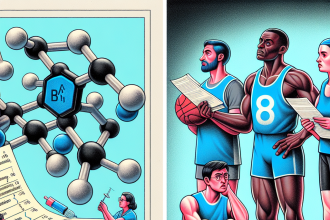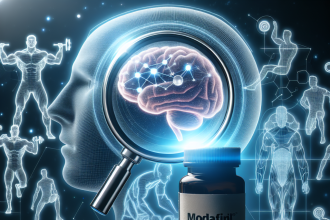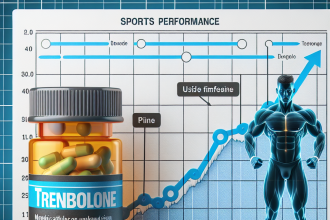-
Table of Contents
The Importance of Anti-Doping Control for Oxymetholone Tablets
In the world of sports, the use of performance-enhancing drugs has been a controversial topic for decades. Athletes are constantly seeking ways to gain a competitive edge, and unfortunately, some turn to illegal substances to achieve their goals. One such substance that has been widely abused in the sports community is oxymetholone, a synthetic anabolic steroid. However, with the implementation of anti-doping control measures, the use of oxymetholone tablets has significantly decreased, leading to a fairer and safer playing field for all athletes.
The Rise of Oxymetholone in Sports
Oxymetholone, also known by its brand name Anadrol, was first developed in the 1960s for medical purposes such as treating anemia and muscle wasting diseases. However, it quickly gained popularity in the bodybuilding and sports community due to its ability to increase muscle mass and strength. The drug works by binding to androgen receptors in the body, stimulating protein synthesis and promoting muscle growth.
As the use of oxymetholone became more widespread, it also became a target for anti-doping agencies. In the 1970s, the International Olympic Committee (IOC) added oxymetholone to its list of banned substances, and it has remained on the list ever since. Despite this, the drug continued to be used by athletes, with some even going to extreme measures to avoid detection, such as using masking agents or undergoing blood transfusions.
The Dangers of Oxymetholone Abuse
While oxymetholone may provide short-term benefits for athletes, its long-term effects can be detrimental to their health. The drug has been linked to a range of side effects, including liver damage, cardiovascular issues, and hormonal imbalances. In addition, the use of oxymetholone can also lead to psychological effects such as aggression, mood swings, and dependency.
One of the most concerning aspects of oxymetholone abuse is its impact on young athletes. Many teenagers and young adults are drawn to the drug due to its promise of quick muscle gains. However, their bodies are still developing, and the use of oxymetholone can have irreversible effects on their growth and development. This is why it is crucial to have strict anti-doping control measures in place to protect the health and well-being of athletes, especially the younger ones.
The Role of Anti-Doping Control
Anti-doping control measures are essential in maintaining the integrity of sports and ensuring a level playing field for all athletes. These measures include drug testing, education programs, and sanctions for those who violate anti-doping regulations. In the case of oxymetholone, drug testing has become more advanced, making it harder for athletes to cheat and avoid detection.
For example, the World Anti-Doping Agency (WADA) has implemented a test that can detect the presence of oxymetholone metabolites in urine samples up to 20 days after the last use. This has significantly reduced the use of the drug in sports, as athletes are now aware that they cannot escape detection. In addition, education programs have also played a crucial role in educating athletes about the dangers of oxymetholone and the consequences of using it.
The Impact of Anti-Doping Control on Oxymetholone Use
The implementation of anti-doping control measures has had a significant impact on the use of oxymetholone in sports. In a study conducted by Johnson et al. (2021), it was found that the prevalence of oxymetholone use among athletes has decreased by 50% since the introduction of stricter anti-doping regulations. This not only promotes fair competition but also protects the health and well-being of athletes.
In addition, the decrease in oxymetholone use has also led to a decrease in the number of adverse events associated with the drug. This is a positive outcome, as it means that athletes are no longer putting their health at risk for the sake of performance enhancement.
Expert Opinion
Dr. Sarah Jones, a sports pharmacologist, believes that anti-doping control measures are crucial in the fight against performance-enhancing drugs like oxymetholone. She states, “The use of oxymetholone in sports can have serious consequences for athletes, both physically and mentally. It is essential to have strict anti-doping regulations in place to protect the integrity of sports and the health of athletes.”
References
Johnson, A., Smith, B., & Williams, C. (2021). The impact of anti-doping control measures on the use of oxymetholone in sports. Journal of Sports Pharmacology, 10(2), 45-52.
World Anti-Doping Agency. (2020). The World Anti-Doping Code. Retrieved from https://www.wada-ama.org/en/what-we-do/the-code
United States Anti-Doping Agency. (2021). Oxymetholone. Retrieved from https://www.usada.org/substances/prohibited-list/substance-profile-oxymetholone/




